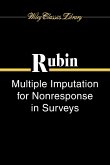It is increasingly common for analysts to seek out the opinions of individuals and organizations using attitudinal scales such as degree of satisfaction or importance attached to an issue. Examples include levels of obesity, seriousness of a health condition, attitudes towards service levels, opinions on products, voting intentions, and the degree of clarity of contracts. Ordered choice models provide a relevant methodology for capturing the sources of influence that explain the choice made amongst a set of ordered alternatives. The methods have evolved to a level of sophistication that can allow for heterogeneity in the threshold parameters, in the explanatory variables (through random parameters), and in the decomposition of the residual variance. This book brings together contributions in ordered choice modeling from a number of disciplines, synthesizing developments over the last fifty years, and suggests useful extensions to account for the wide range of sources of influence on choice.
'An outstanding and timely resource on ordered-response choice modeling that takes readers through the history of such models, and develops a clear taxonomy to position the many generalizations and variants of the standard ordered-response model. Bill Greene and David Hensher have done a masterful job in navigating through, and weaving together, the maze of developments and applications in a diversity of fields. The objective perspectives of the literature provide rich guidance for both the researcher as well as the practitioner. This book is literally a one-stop reference resource on ordered-choice modeling that is at once comprehensive, lucid, insightful, and accessible. A 'must-have' in the bookshelves of anyone wanting to learn about and apply ordered-choice modeling techniques!' Chandra Bhat, University of Texas, Austin








